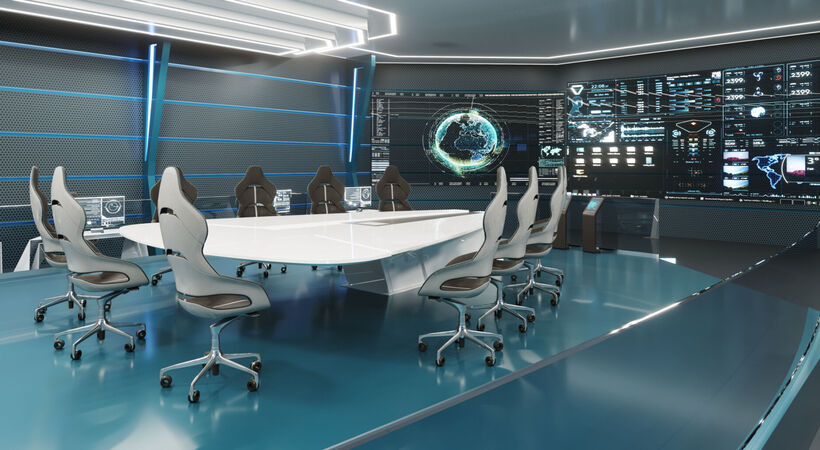Tim Shirt from office power and connectivity specialist, CMD Ltd, discusses the emerging trends shaping electrical fit-out and workstation solutions and the opportunities for contractors to provide solutions for future flexibility and working practices.in office environments.
Over the past year, we have discovered the pivotal role of technology in contemporary working practices. Not only have we learned how dependent we are on effective and reliable technology, we have also seen how quickly people can adapt to new tools and platforms and how much more technology allows them to do. Collaboration across departments, sites and borders has become easier, paperless office practices have fallen into place out of necessity, and agile working has become routine.
The importance of a comfortable work environment has also been firmly established. While some have struggled to find an ergonomic set up and sufficient connectivity, many have benefitted from softer surroundings and biophilia, along with the flexibility of planning their working hours around their lifestyle.
These experiences will influence workplace trends moving forward, across electrical fit out, interior design and office equipment.Refurbishment and investment plans are being expedited to allow employers to adjust to the ‘new normal’, keep their teams safe and motivated, and prepare for the future. Key to securing customer relationships as the future office takes place will be understanding product requirements and how they fit into specifier needs.
The office environment
Futureproofing of office environments is far from a new concept. CMD’s Betatrak busbar powertrack systems and Power Hub power distribution systems are widely used in office environments to enable spaces to be reconfigured and occupancy to be scaled up or down. Looking ahead, we are likely to see an increased focus on power track or hub distribution systems, so that layouts can remain flexible as needs change.
The stark white bench desk layouts that have been a ubiquitous feature of corporate environments over the past decade will make way for interiors that have more of a resi-commercial look and feel, combining a more homely visual style with a layout that enables both social distancing and collaboration, with connectivity built in.
In the short-term at least, offices will need to implement cleaning and booking regimes to enable social distancing and infection control. As the virus subsides and employers plan for lower occupancy with reduced accommodation, booking systems for hot desking are likely to remain, which has implications for workstation connectivity, smart technology and on desk equipment, including the use of Bluetooth and RFID technologies to allow automated registration of personnel at the workstation.
Technology enabled
Increased awareness of the natural environment and climate change are also likely to influence increased implementation of smart buildings. Occupiers are looking for reduced overheads and accountability for carbon emissions, which means smart systems will be more widely adopted.
We have also reached a period where digital natives are a key part of the workforce. For generation Z, there is an expectation that technology is part of every environment, and, as tech continues to advance, they will be quick to adopt and demand it.
This means bringing together power, charging and data, not just at the workstation, but also in breakout spaces and throughout the office building. Apple’s adoption of wireless charging technology has been a game changer in terms of homogenising the tech required for wireless charging. As this technology has become more robust, enabling charging of both phones and tablets, there is a more compelling case for integrating it within furniture, alongside USB charging and power sockets. With a move away from traditional desk layouts, we are also likely to see powerbank functionality built into furniture for break out areas and acoustic meeting/isolation booths.
The technological evolution of the office will also require a focus on enabling multi-location collaboration via online platforms. Whether teams are collaborating across locations or from both office and home environments, offices will need to be equipped with sufficient data capabilities and A/V equipment to facilitate real time communication. This will include increasingly sophisticated document sharing platforms and collaboration software tools, along with A/V equipment. Consequently, compact units such as the CMD Linear, which combines power, charging, data and media, and the four-sided CMD Inca, which combines power, charging and data in a compact unit, will be go-to solutions.
Capitalising on change
The pandemic and increasingly available complex technologies have created a perfect storm to escalate the pace of change and, where there is change, there is opportunity. The challenge is to understand the trends and offer the right combination of solutions.





